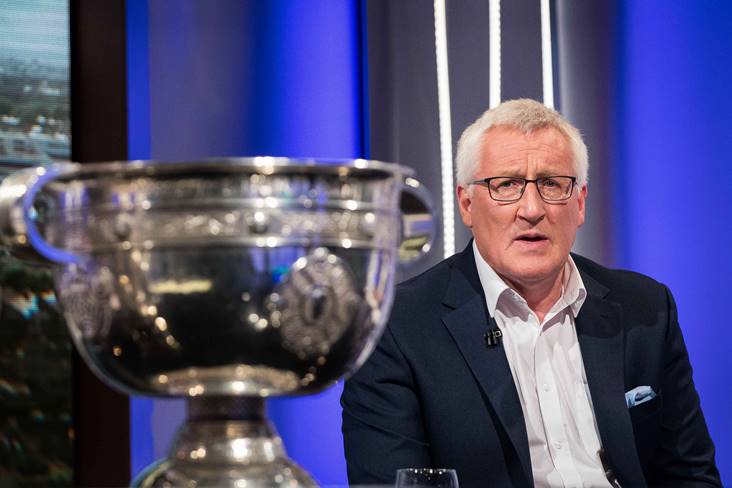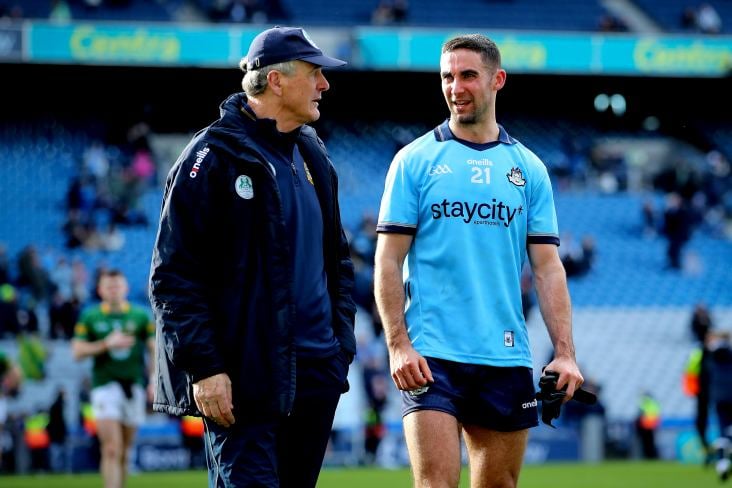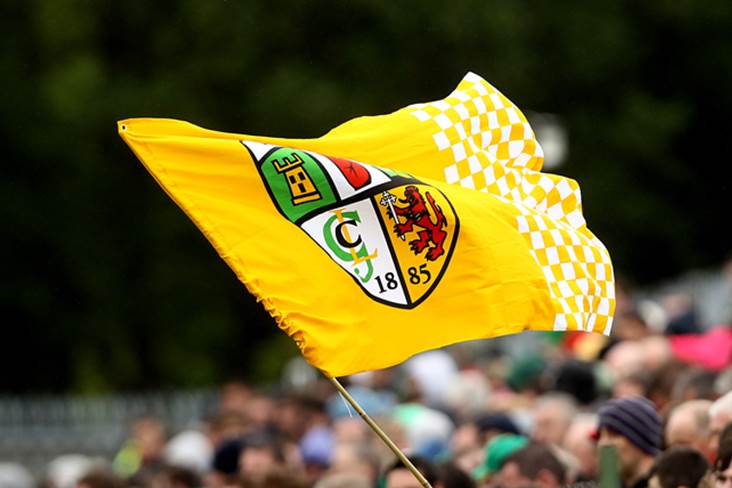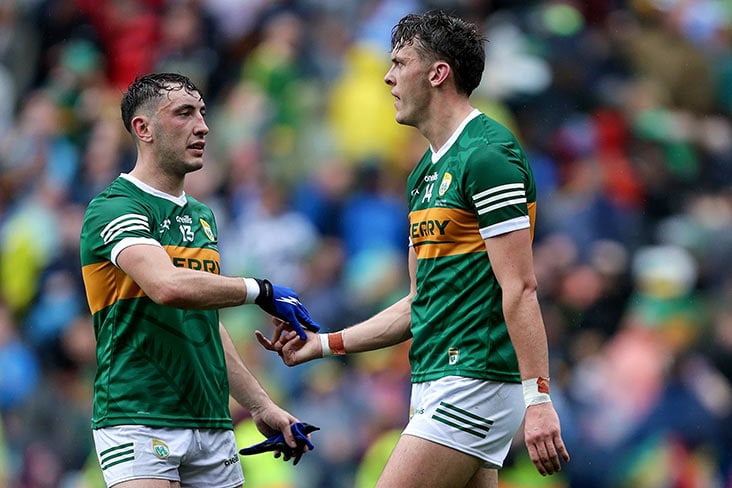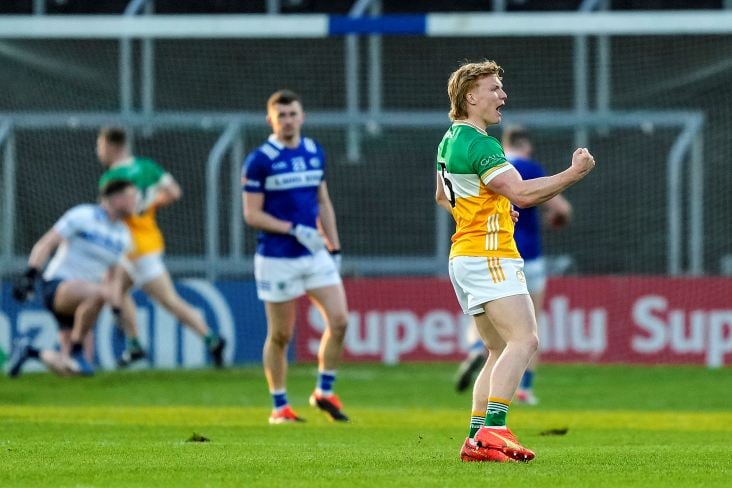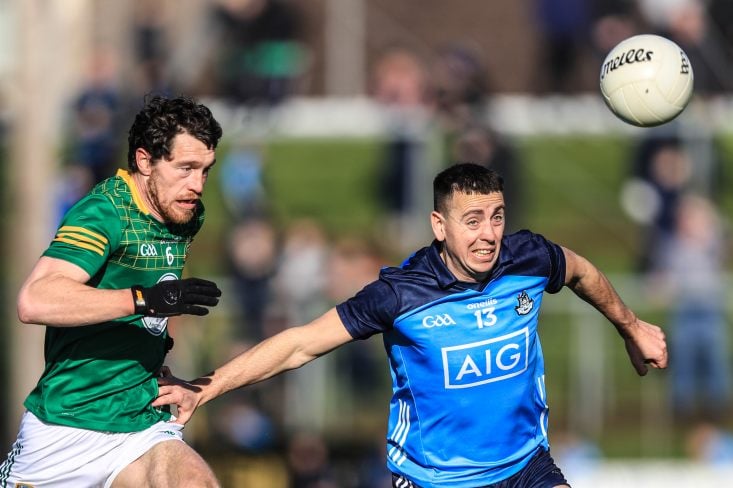SCPR's Finalised Proposed Gaelic Football Playing Rules for Experimentation
November 13, 2018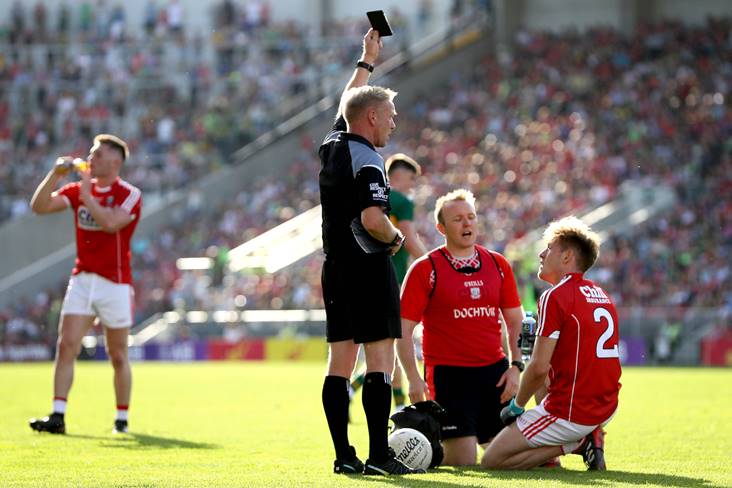
Cork's Sam Ryan is shown a black card by referee Ciaran Branagan.
©INPHO/Ryan Byrne.
The following amended list of experimental playing rules will be put before the GAA’s Central Council this weekend for discussion.
Central Council will determine which rules will be used on an experimental basis in the 2019 pre-season competitions and the Allianz Leagues that follow.
Following the initial publication of a number of playing rules proposals for experimentation on October 2nd, the Standing Committee on the Playing Rules (SCPR) undertook to conduct a detailed period of consultation with senior intercounty football players, managers and referees throughout the remainder of October. This consultation, which elicited genuine engagement by many, closed on October 29th and its findings were considered by the SCPR at its final meeting of the year, which took place shortly thereafter.
The SCPR has outlined below its final, considered position on a number of playing rules for experimentation during the forthcoming season (specifically the pre-season provincial tournaments and Allianz League) for information and decision. These will be put before members of An Coiste Bainistíochta and Central Council at their respective meetings on November 23rd and 24th.
Proposal 1: Hand Pass
Proposal for Experimentation (The Hand Pass): To introduce a restriction of three consecutive passes of the ball with the fist or open hand by players of the team in possession.
The playing of the ball by open hand(s) or fist for the purpose of scoring a point shall not be deemed a hand pass.
Penalty:
Free kick from where the foul occurred except as provided under the Exceptions in Rule 2.2.
Aim: To respond to the reported over use of the hand pass in Gaelic Football, a facet of the game that has grown exponentially over the last 8 seasons (Reference: Data provided to the SCPR by GaelicStats, 2018). This proposal also responds to views expressed by some GAA County Boards explicitly requesting action on this matter, when surveyed in July 2018 by the SCPR.
Proposal 2: Side-line Kick
Proposal for Experimentation (Side-line Kick): The ball shall be played forward from the kick except where the kick is inside the 20m line of the opposing team.
Penalty:
Cancel side-line kick. Throw-in the ball in accordance with Rule 2.2 Exception (v)
Aim: To generate more contested possessions, to encourage the ball to be returned to play quickly and to further initiate offensive play
Proposal 3: The Advanced Mark
Proposal for Experimentation (The Advanced Mark): To extend the application of the Mark to the clean catching of the ball inside a 45m line from a kick in play (i.e. not from set-play) delivered by an attacking player on or beyond the opposing team’s 45m line, that travels a minimum of
20 metres and without it touching the ground.
The application of the Mark shall be standardised as follows:
Fifteen seconds shall be allowed for a Free to be taken from a Mark.
If the Referee determines that the player who makes the Mark has been injured in the process and unable to take the kick, the Referee shall direct the player’s nearest team mate to take the kick, but this may only be allowed in exceptional circumstances.
A player shall signify he is taking a Mark by immediately raising an arm upright.
A player that ‘plays on’ may be challenged/tackled.
A score may be made from a free awarded for a Mark in all cases.
In the case of a Mark being awarded to an attacking player on or inside the 13m line, the free, if availed of, shall be taken from the point on the 13m line directly in line with where the Mark is awarded.
In the case of a Mark being awarded to a defending player on or inside the 13m line, the free kick, if availed of, shall be taken from the point where the Mark is awarded.
The normal Rules governing freekicks shall apply (e.g. players being 13m from the ball before it is kicked).
Exception:
A free-kick from a Mark shall be taken from the hand(s) only.
Aim: To further incentivize and reward the core skills of Gaelic football i.e. catching and kicking of the football; the kicking of the football in a forward direction and of a distance spanning minimally 20 metres; the clean catching of possession by both attackers and defenders; creative and innovative play; and the transfer of the ball into the offensive part of the field on a more consistent basis.
Proposal 4: Sin-Bin
Proposal for Experimentation (Sin-Bin): To have a Penalty on the day for a Black Card Infraction by ordering off the offending player for ten minutes in a Sin Bin.
The 10 minutes shall commence with the ordering off to the sin-bin and shall end on the expiry of the 10 minutes, irrespective of delays.
The 10 minutes shall be monitored by the 4th Official, where operating, and otherwise by the Referee.
The player may only re-join the game at a break in play and on the instruction of the 4th Official or Referee.
A subsequent Black Card Infraction shall be penalised by the showing of a Black Card followed by a Red Card.
In this case there shall be no substitution allowed.
The maximum number of substitutions in normal time to return to five.
The duties of a Referee and Sideline Official to be amended in accordance with the main Proposal.
Aim: To reduce the reported increase in cynical play/fouling and implement a penalty which encourages behavioral change, as the introduction of the sin-bin will give rise to an immediate material disadvantage for the team that has a player ‘sin binned’. A corollary of this- and perhaps why this proposal was widely supported by players surveyed on these experimental rules during October 2018- is that the player who receives a black card is permitted to return to the field of play after 10 minutes. For players who, perhaps upon considered review, may have been harshly awarded a black card in the first instance, this experimental proposal does offer some form of redemption.
Proposal 5: Kick-Out
Proposal for Experimentation (Kick-Out): The kick-out shall be taken off the ground from a point on the part of the 20 m line that forms the semi-circular arc.
The ball shall not be played by a defending player until the ball has crossed the 45m line (nearest the kick-out point) or is played by an opposing player.
All players, other than the Goalkeeper (and another player if the goalkeeper is not taking the kick-out) shall be outside the 20m line, outside the arc and 13m from the ball until it has been kicked.
Penalties:
For another player on the team taking a kick-out to play the ball before it has crossed the 45m line (nearest the kick-out point) or has been played by an opposing player.
Penalty:
Cancel kick-out
Throw in the ball on defenders’ 20m line in front of the scoring space.
For an opposing player not being outside the 20m line, outside the arc and 13m from the ball when it is kicked.
Penalty:
Free kick 13m more advantageous than place of original kick-out.
For another player on the team taking a kick-out not being outside the 20m line, outside the arc and 13m from the ball until it has been kicked.
Penalty:
Cancel kick-out
Throw-in the ball on defenders’ 20m line in front of the scoring space
Aim: To encourage teams to kick the ball further up the field from the kick out when compared to the current practice employed by many teams whereby kick outs are played the minimum distance of 13 metres, which is affirming the possession style game that is off-putting for some spectators. The more rapid transfer of the ball into a contested part of the field may also discourage teams from employing a ‘blanket defense’ tactic as it will be increasingly difficult to establish certainty around which team will claim possession from the kick out. It will further present opportunities for the skill of clean catching and the deployment of the Mark, where it is accepted, to be demonstrated.
Tweet
